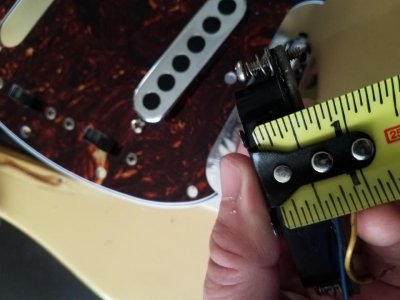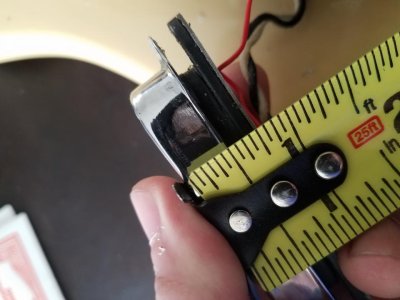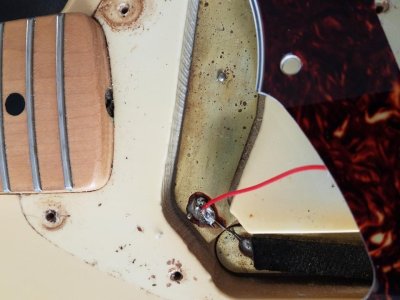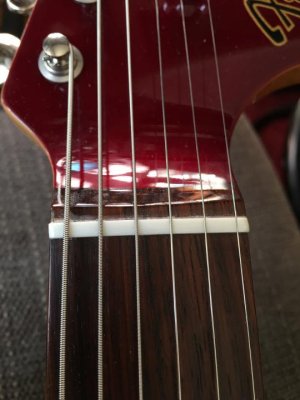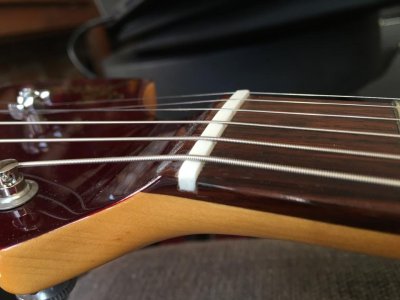There's a thread on Offsetguitars.com in the last month detailing tuning issues due to strings binding on a Mastery, along with saddle movement and other problems - and that was on a Jazzmaster, where there's a lot less movement going on than a Mustang. Actually if you search that forum, you'll find a lot of threads about people's issues with the Mastery; they are not fool-proof.
(In fact: In my opinion people often try to use Mastery bridges to mask other setup problems and 'treat the symptoms' of a bad setup - in other words, by the time they get the Mastery running they could have used the stock bridge just fine. I sort of side-eye that bridge for that reason - they can work fine on a Jaguar/Jazzmaster if you put the effort in, but relatively few people use them on Mustangs and I *suspect* there'd be too much friction on a Mustang vs. a Jaguar/Jazzmaster for a Mastery to work as-designed. Try it if you have it though; it may work.)
For yours, first I'd try stretching the intonation springs out on your existing MIJ bridge so the saddles are firm/can't move on the bridge baseplate. That's really the only place the Mustang bridge can 'rattle' and it's a sore spot for the MIJs in general. The Marr bridge will probably work fine, be aware the radius is different; this may or may not be noticeable on your setup. I'm pretty sure (but have not verified) that bridge is also used on the new American Performer Mustangs. You also might be able to find a deal on a vintage Mustang bridge, that's what I have done.

